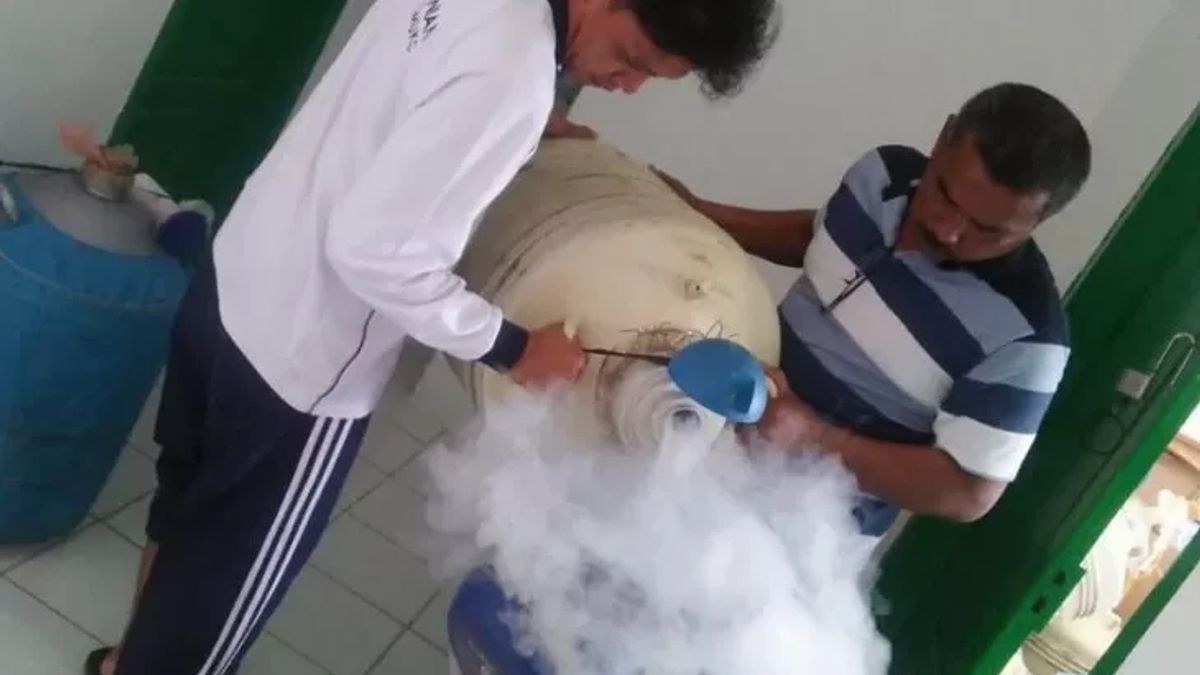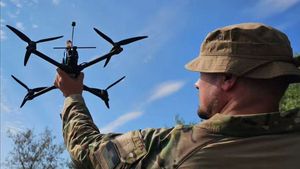JAKARTA - The Ministry of Health (Kemenkes) recommends that traders and business actors do not use liquid nitrogen in ready-to-eat food, especially snacks.
"In accordance with the circular letter from the Ministry of Health, we are currently recommending not using liquid nitrogen in ready-to-eat food, especially for snacks," said the Director of Environmental Health (PL) of the Ministry of Health Anas Ma'ruf in a virtual press conference "The Vigilance of Liquid Nitrogen in Food Ready to Be Saji" in Jakarta, Thursday, January 12, was confiscated by Antara.
As an effort to increase awareness of the use of liquid nitrogen in ready-to-eat food in preventing food poisoning, Anas said the Ministry of Health issued a circular regarding Supervision of the Use of Liquid Nitrogen in Ready-to-Seize Food Products as of January 6, 2023.
"Currently, new sporadic events are still scattered in several scattered places, so what we prioritize is how to carry out vigilance. Our targets are in addition to education for the community and then also education to business actors," he said.
The addition of liquid nitrogen to ready-to-eat food products that do not comply with procedures can trigger poisoning in consumers. One of the health impacts is that liquid nitrogen can cause cold inflammation and burns, especially in some soft tissues such as the skin.
The use of liquid nitrogen in ready-to-eat food products is a concern and causes problems for public health, namely ice smoke or snaking chiki which is popular with children.
The product not only provides a cold taste, but also a mouth sensation that emits smoke, originating from liquid nitrogen or nitrogen liquid, which is nitrogen which is in a liquid state at very low temperatures.
"So for business actors whose business is mobile or in the night market or in the community, we recommend not to use liquid nitrogen in ready-to-eat food, considering that there have been several cases reported due to consuming this gubernatorial chiki," said Anas.
In the circular, provincial, district/city health offices, health centers, Centers for Environmental Health and Disease Control Engineering (BBTKLPP) to port health offices are asked to provide guidance and supervision of ready-to-eat food products that use liquid nitrogen circulating in the community in their working areas.
Local governments are asked to provide education to business actors and related parties about the dangers of liquid nitrogen in ready-to-eat food and provide education to schools, children and communities about the dangers of liquid nitrogen in ready-to-eat food.
"After we conducted socialization, friends in the regions have started to move to provide supervision of business actors who use liquid nitrogen as an auxiliary substance, especially when used in ready-to-eat food," he said.
Meanwhile, restaurants that use liquid nitrogen on ready-to-eat food products must be under the guidance and supervision of the local health office and related parties and provide information on how to consume safely to consumers.
Food management places (TPP) other than restaurants, such as mobile hawker food outlets, are not recommended to use liquid nitrogen in ready-to-eat food products sold.
The hospital was asked to coordinate with the local health office and provide a report in the event of an extraordinary incident (KLB) of food poisoning caused by liquid nitrogen.
If food poisoning occurs caused by the addition of liquid nitrogen, the Rapid Action Team conducts an investigation in accordance with Minister of Health Regulation Number 2 of 2013 concerning Food Toxic KLB.
The Rapid Action Team reported the incident of food poisoning caused by liquid nitrogen to the Early Alert and Response System.
The English, Chinese, Japanese, Arabic, and French versions are automatically generated by the AI. So there may still be inaccuracies in translating, please always see Indonesian as our main language. (system supported by DigitalSiber.id)













